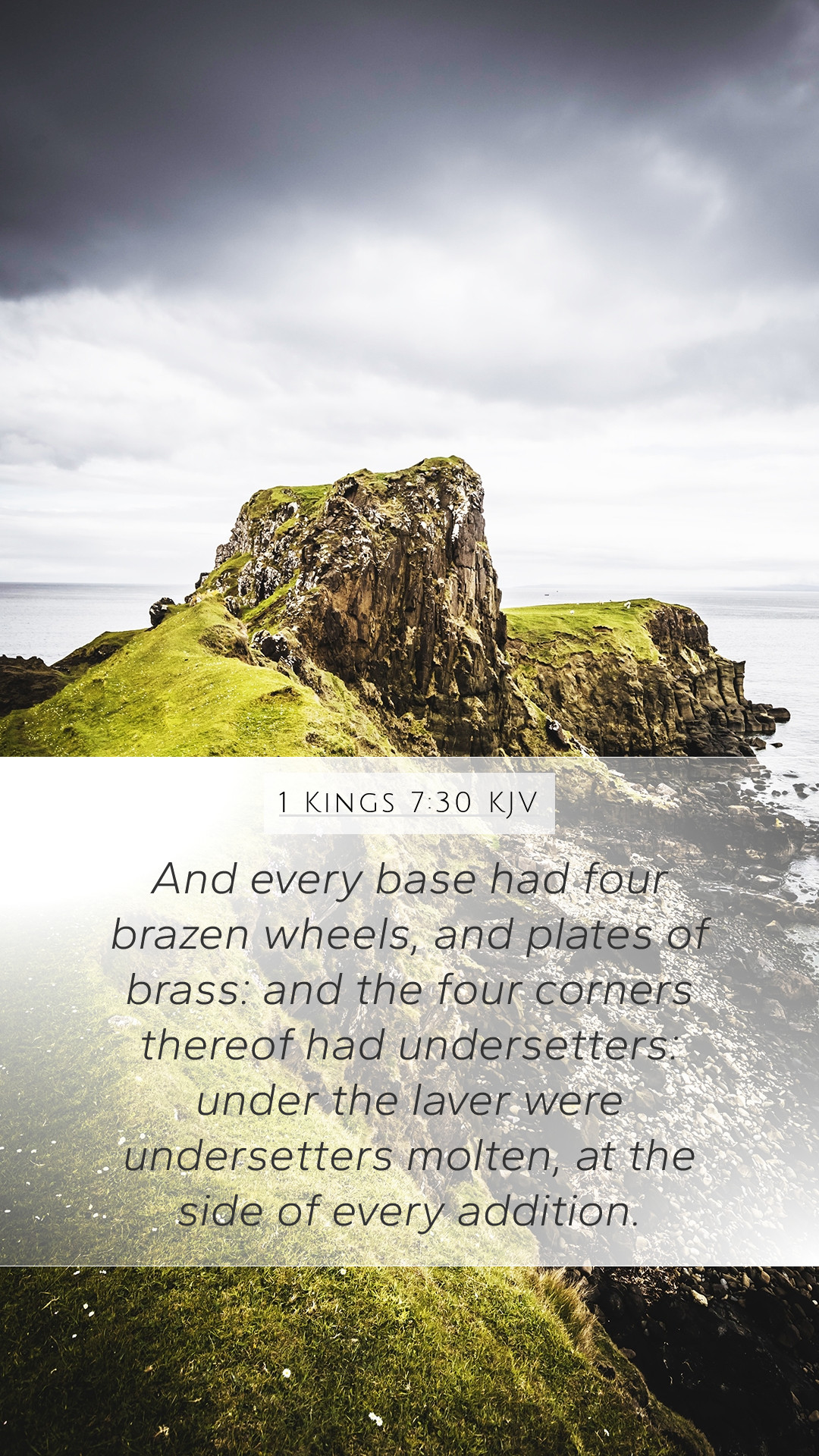Understanding 1 Kings 7:30
The verse 1 Kings 7:30 states:
"And every base was four cubits long, and four cubits broad, and three cubits high: and the work of the bases was on this manner: they had borders, and the borders were between the ledges." (1 Kings 7:30 KJV)
Overview
This verse gives a detailed description of the bases for the brazen vessels used in the temple built by Solomon. These bases played a vital role in supporting the large sacrificial bowls, demonstrating both beauty and functionality in temple architecture.
Contextual Background
In understanding this verse, it is important to consider the architectural significance of the temple, which Solomon constructed as a place for the worship of Yahweh. The bases mentioned here were part of the intricate design that conveyed the glory and holiness of God. The details provided give insight into the craftsmanship and the importance of aesthetic considerations in biblical worship spaces.
Biblical Commentary Insights
-
Matthew Henry:
Henry emphasizes the meticulous nature of the materials and dimensions of the temple's components, reflecting the glory of God and the seriousness of devotion required in worship. He notes that the precise measurements illustrate God's order and holiness.
-
Albert Barnes:
Barnes highlights the significance of the bases in temple worship, pointing out that they were not only functional but also ornamental. He interprets the borders as a symbol of the distinction between the sacred and the secular, reinforcing the principle that grandeur in worship reflects the greatness of God.
-
Adam Clarke:
Clarke delves into the physical and symbolic meanings of the bases, discussing their role in supporting the brazen vessels. He argues that such details portray an overarching narrative of divine order and the necessity of structure in spiritual life and worship practices.
Symbolism and Application
From a spiritual standpoint, the bases represent the strong foundation necessary for any worship, both individual and corporate. Just as these bases supported vital vessels in the temple, our spiritual lives must be grounded in faith and truth. This passage challenges readers to reflect on the bases of their own worship practices—whether they are built on the solid rock of scripture or shifting sands of personal preference.
Cross References
- Exodus 25:25: This verse discusses the construction details of the tabernacle, showing the importance of precise dimensions in holy artifacts.
- 1 Chronicles 28:10: David encourages Solomon regarding the plans for the temple, which further emphasizes the sacred responsibility involved in temple worship.
- 2 Chronicles 4:14: Provides additional context about the vessels and utensils created for temple service, highlighting the importance of dedication in worship.
Conclusion
1 Kings 7:30 serves as more than just an architectural note; it calls believers to appreciate the wonder of God’s presence in worship and to consider the importance of a solid foundation in all spiritual endeavors. Through proper understanding and interpretation of such verses, one can gain insightful Bible study lessons that apply to daily life and enhance one's relationship with God.
For those interested in Bible study resources or Bible study guides, this verse may serve as a great starting point for a deeper exploration of the significance of design and order in worship.


